

Tuesday marks two years since the Israel-Hamas war began, bringing devastation across the region.
The war -- which started after Hamas launched a surprise terrorist attack in Israel on Oct. 7, 2023, that killed roughly 1,200 Israelis, and Israel responded by declaring war -- has led to thousands of people killed and injured in the Gaza Strip and Israel, as Israeli hostages are still being held in Gaza.
Meanwhile, Gaza has been experiencing a worsening humanitarian crisis. Fewer than half of the region's hospitals are functioning, all of them partially, according to the World Health Organization (WHO). A growing number of children are either at risk of or are suffering from acute malnutrition due to a lack of food, according to humanitarian groups.
Here is a look at the tragic human toll of the war over the past two years, by the numbers.
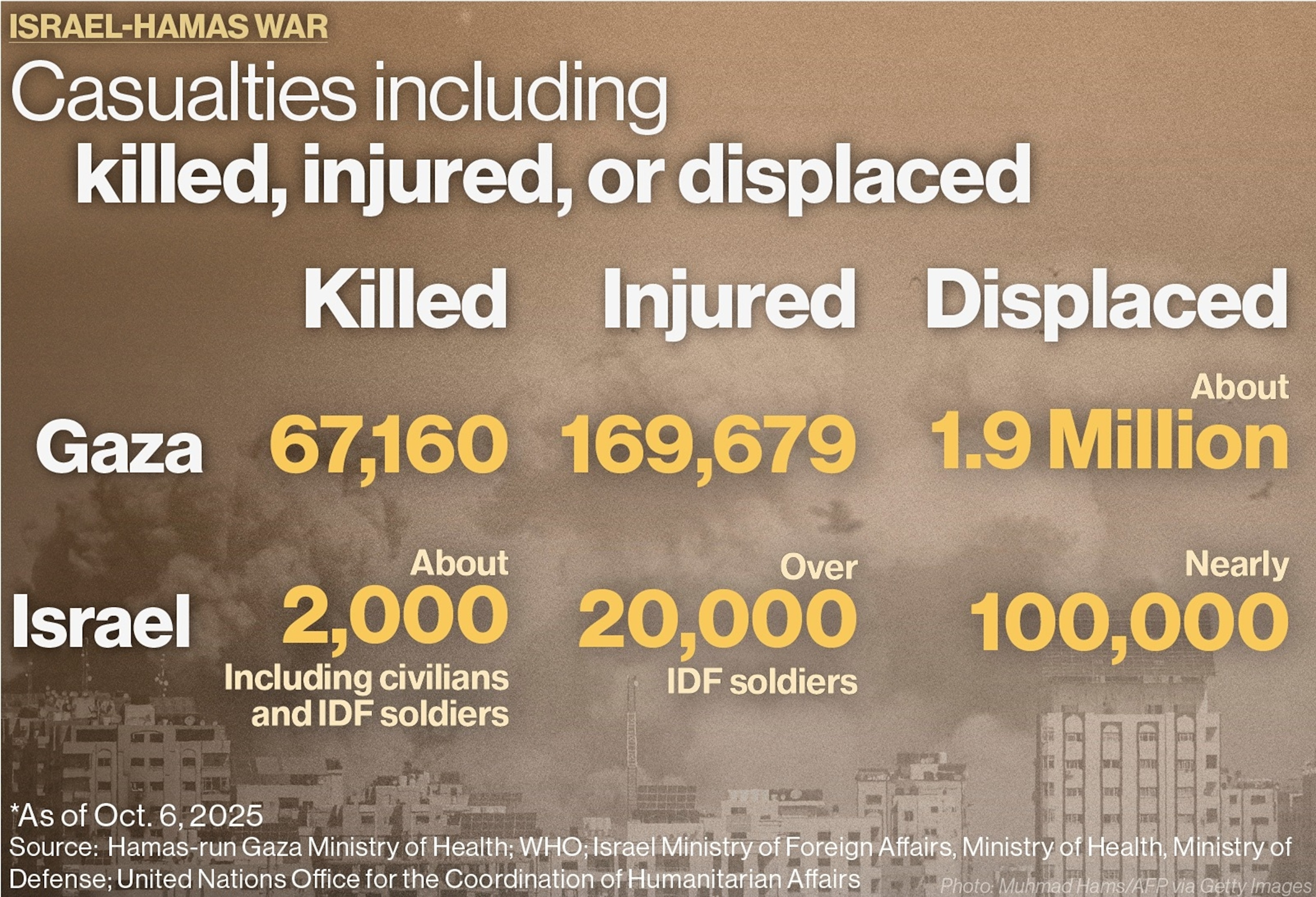
In Israel, about 2,000 people have been killed, including about 900 civilians during the Oct. 7 terrorist attacks and at least 913 Israel Defense Forces (IDF) soldiers since the war began, according to Israeli officials.
Additionally, more than 20,000 IDF soldiers have been injured since the war began, according to the Israel Ministry of Defense.
In Gaza, more than 67,000 people have been killed, and more than 169,600 people have been injured as of Oct. 6, according to the Hamas-run Gaza Ministry of Health.
Earlier this year, the United Nations (U.N.) said at least 11,000 people in Gaza remain missing. Some may be buried under the rubble, meaning the true death toll could be higher.
In Israel, more than 100,000 people have been internally displaced due to the war, according to Israeli officials. In Gaza, about 1.9 million, or 90% of the population, have been displaced, according to the United Nations Relief and Works Agency for Palestine Refugees in the Near East (UNRWA).
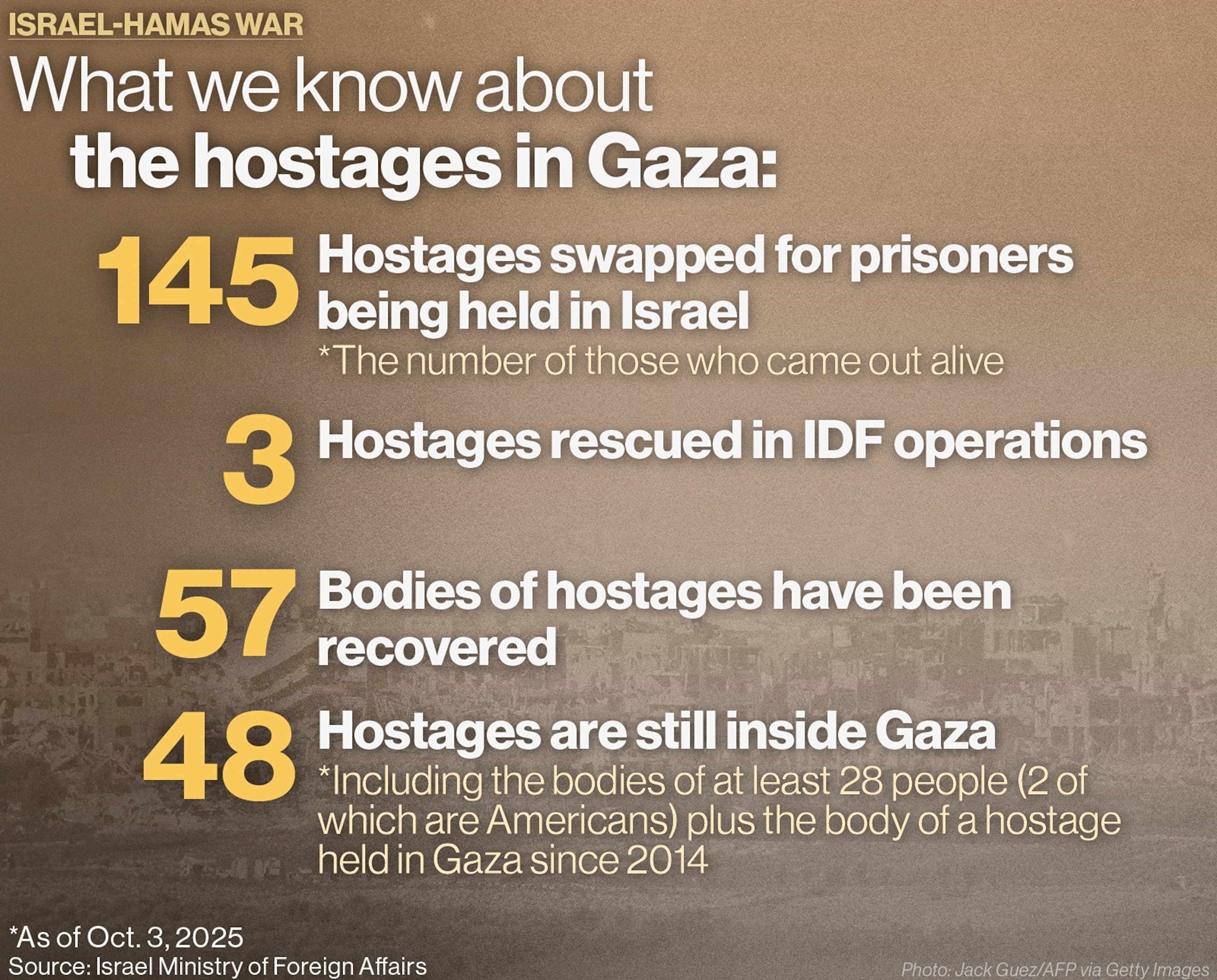
When Hamas launched its terrorist attack, militants kidnapped nearly 250 hostages -- including women, children and elderly adults -- and took them into Gaza.
As of Oct. 6, 140 hostages have come out of Gaza alive, having been swapped for prisoners being held in Israel, Israeli officials said. The largest hostage release came on Nov. 24. 2023, during a pause in fighting.
An additional eight hostages were rescued in IDF operations.
About 48 hostages remain in Gaza, including the bodies of at least 28 people no longer believed to be alive, according to Israeli officials. The latter figure includes the bodies of two Americans and the body of a hostage held in Gaza since 2014.
The IDF has so far recovered the remains of 57 hostages inside Gaza.
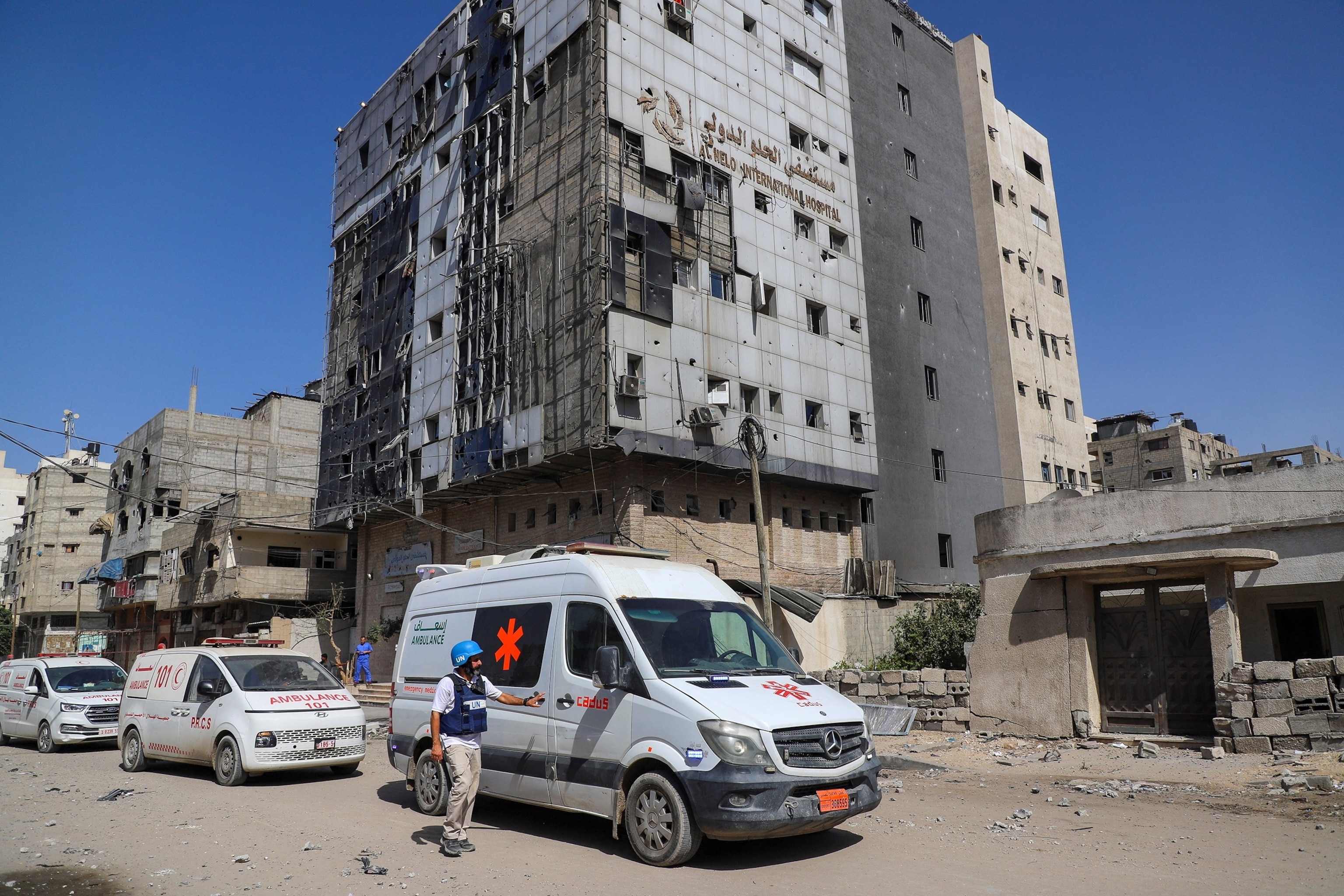
Before the war, 36 hospitals were functioning in Gaza -- excluding field hospitals -- according to the WHO.
As of Oct. 2, 22 hospitals have stopped functioning. Four hospitals were forced to shut down in September alone due to Israel's military offensive in Gaza City, the WHO said.
The remaining 14 hospitals in Gaza are partially functional, including eight in Gaza City in the north, three in Deir al Balah in central Gaza and three in Khan Younis in southern Gaza.
There are currently no fully functioning hospitals, according to the global health agency.
Israel has claimed that Hamas uses hospitals to "conduct and promote" terrorist activity. Hamas has denied claims that it is operating from within hospitals.
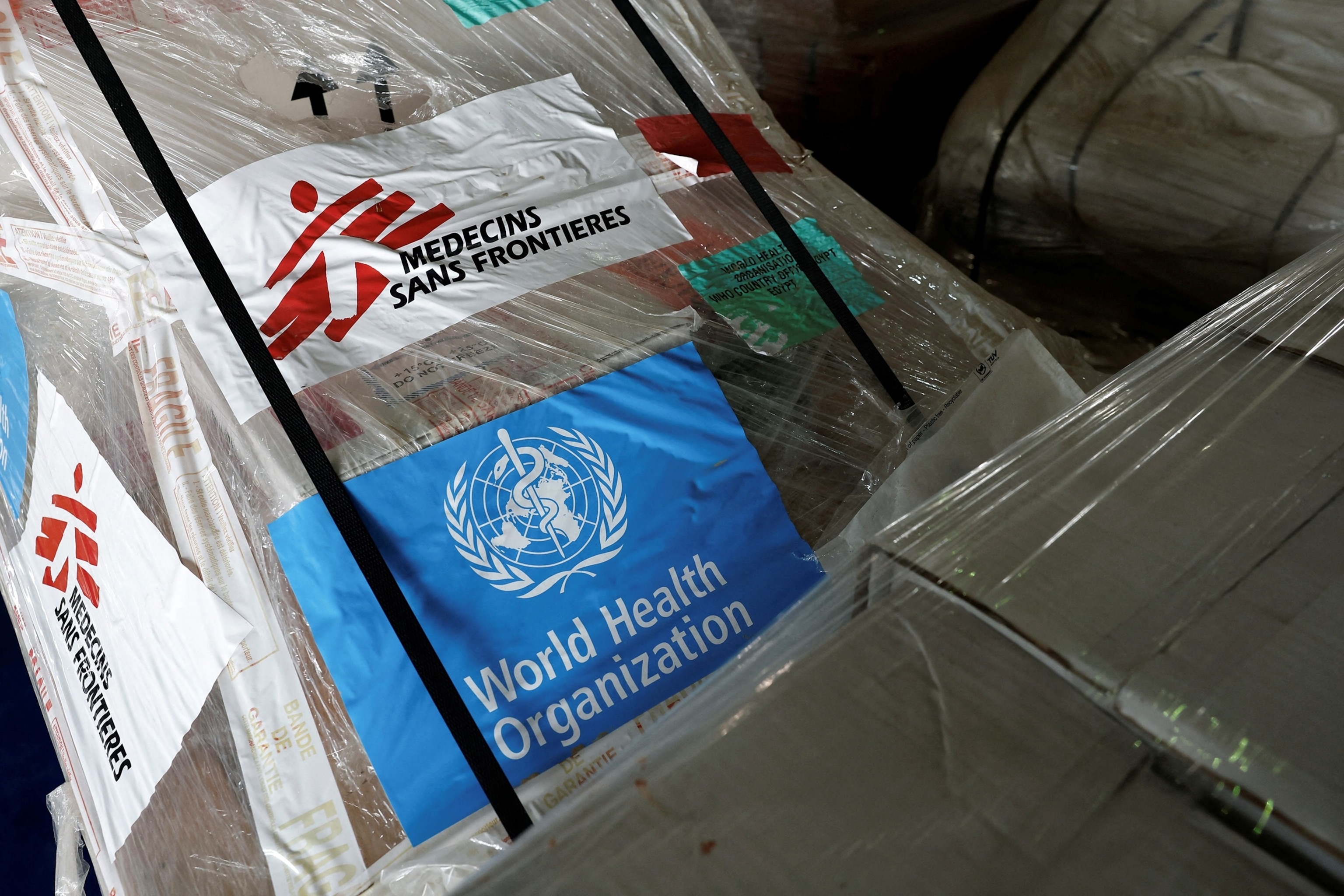
As of late May, more than 1.8 million tons of aid have entered Gaza, according to the Israeli Prime Minister's Office.
Aid groups claim Israeli authorities block humanitarian aid from entering the Strip and that the aid that does enter is not enough to meet the needs of the population.
The Israeli government has denied that it is limiting the amount of aid entering Gaza and has claimed Hamas steals aid meant for civilians. Hamas has denied these claims.
Nearly 1,900 Palestinians have been killed while seeking aid since May 27, which is when U.S.- and Israel-backed Gaza Humanitarian Foundation (GHF) began operations, according to the Office of the United Nations High Commissioner for Human Rights (OHCHR).
The OHCHR said more than 1,000 people have been killed in the vicinity of GHF sites, while others have been killed on the routes of supply trucks, although the office did not say these were GHF trucks.
"While GHF strongly disputes that any aid seekers have been killed at GHF sites, and urges caution surrounding all of these figures given the reliance on data provided by Hamas-controlled Gaza Health Ministry, it is notable that the UN itself cites a significant number of deaths occurring at or near its convoys while 92% of their aid not making it to their intended destination," a GHF spokesperson said in a statement to ABC News.
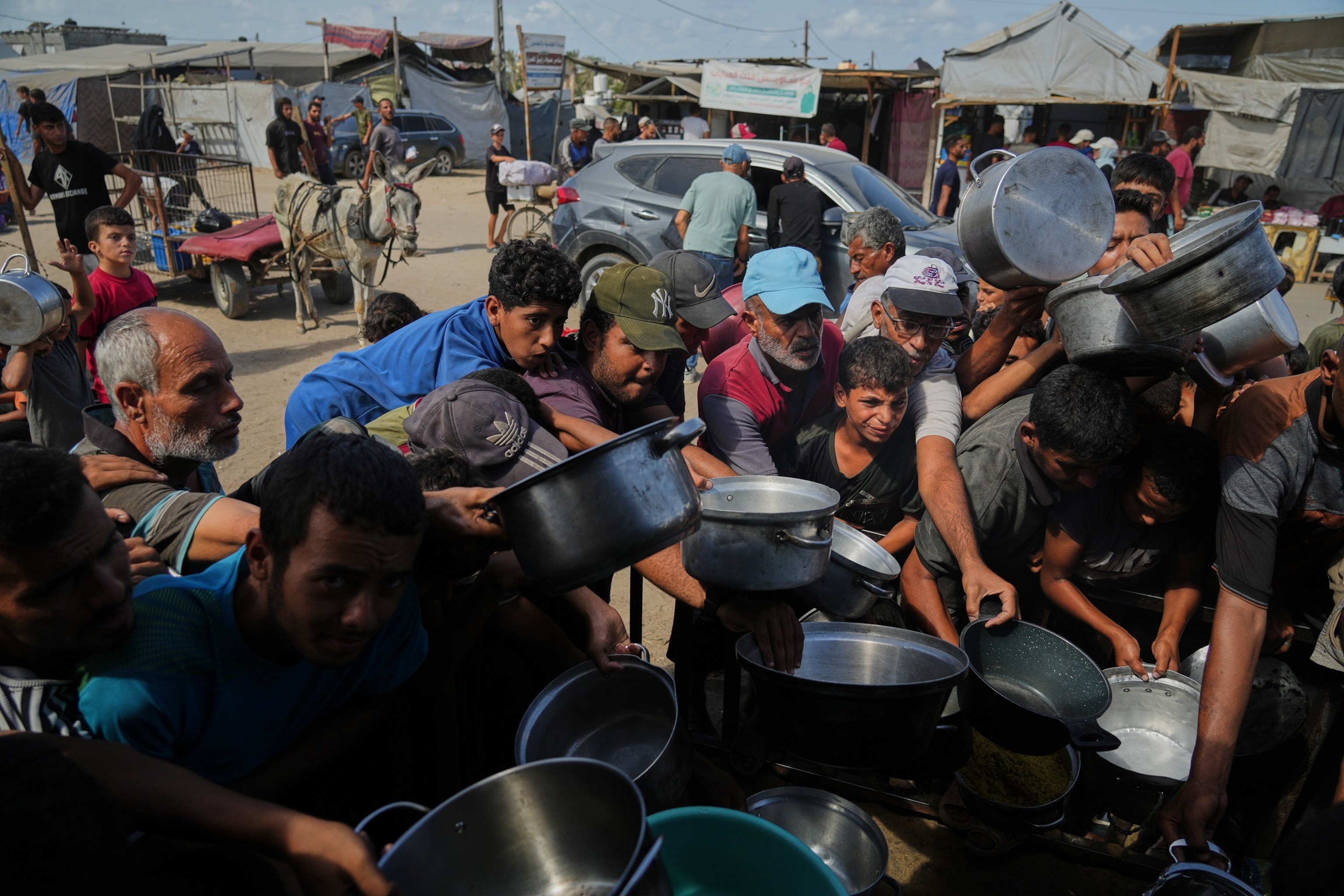
The ongoing conflict, along with a lack of adequate aid, has led to thousands of malnourished Gazans, according to humanitarian organizations.
An August report from the Integrated Food Security Phase Classification (IPC) determined famine is occurring in parts of Gaza, with more than 500,000 experiencing "catastrophic" levels of hunger.
Children have been greatly affected by the hunger crisis. In August, the number of children in Gaza who are acutely malnourished rose to over 14,000, with more than 320,000 children at risk of acute malnutrition, according to UNICEF.
As of Oct. 1, 151 children have died of acute malnutrition in Gaza, according to the Hamas-run Gaza Ministry of Health.
On Sept. 26, UNRWA shared an assessment from the International Rescue Committee that found one in three children under age three went a full day without food in 24 hours.
"This war must end now. Aid must be allowed into the Gaza Strip, including food and nutrition supplies. Humanitarians must be allowed to do their jobs," Tess Ingram, communications manager for UNICEF, said in a press release. "The children of Gaza are being punished by these decisions, and it's killing them."
